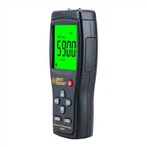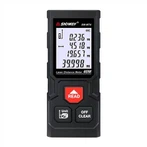Special functions and applications of the multimeters are as follows
Is a digital multimeter necessarily better than an analog multimeter?
Solution: Digital multimeters have been quickly applied due to their excellent qualities such as high precision and sensitivity, fast measurement speed, multiple functions, small size, high input impedance, easy observation, and powerful communication functions. There is a trend towards replacing analog pointer meters.
But in certain situations, such as those with strong electromagnetic interference, the data tested with a digital multimeter may have significant deviations because the input impedance of the digital multimeter is high and easily affected by induced potential.
During maintenance, it is suspected through troubleshooting that the diode or transistor in the circuit may be damaged. But using a digital meter diode to measure its conduction voltage is about 0.6V, which is infinite in reverse. No problem, even after checking the circuit again, no faults were found. Why?
Solution: Most digital meters emit a test voltage of about 3-4.5V from the diode mode. If the tested transistor has slight leakage or the characteristic curve has deteriorated, it cannot be displayed at such low voltage. At this point, you need to use an analog meter with a 10K resistance range. The test voltage generated by this range is 10V or 15V, and at this test voltage, it will be found that the suspected transistor has leakage in the reverse direction. Similarly, when measuring the resistance of certain precision sensitive components with very low withstand voltage, using an analog meter can easily damage the sensitive components. At this point, a digital meter should be used for measurement.
3. Using a certain multimeter to measure the voltage value after the attenuation of the high-voltage probe, it was found that the DCV test was more accurate, but the ACV error was significant. Even when using a multimeter with high precision, why is it still the same?
Solution: The vast majority of multimeters use parallel connection to measure voltage, and for the entire testing circuit, the voltmeter itself is equivalent to a load that is the input impedance. The larger the impedance of this load, the smaller the impact on the tested circuit, and the more accurate the test will be. But nothing can be perfect, high impedance means sacrificing the bandwidth of the test. At present, the input impedance of multimeters with a frequency response of around 100KHz on the market is around 1.1M, so it will have a significant impact on testing the voltage at the two ends of high resistance loads, such as the high resistance of the high-voltage probe itself. At this point, you need to choose a high internal resistance multimeter, such as the ESCORT 170/172/176/178/179 handheld digital multimeter, which provides an input impedance of up to 10000 Ω when testing ACV, in order to avoid this problem.
In actual testing, I need to measure not only voltage and current, impedance of motor windings, but also speed. Is there a multimeter that can achieve this function?
Solution: ESCORT (Fugui) -172 handheld digital multimeter can meet your above requirements, and its safety regulations meet the International Electrotechnical Commission IEC1010-1 CATII 1000V and CATIII 600V standards, so you can use it with confidence even in Class III environments without worrying about safety issues.






